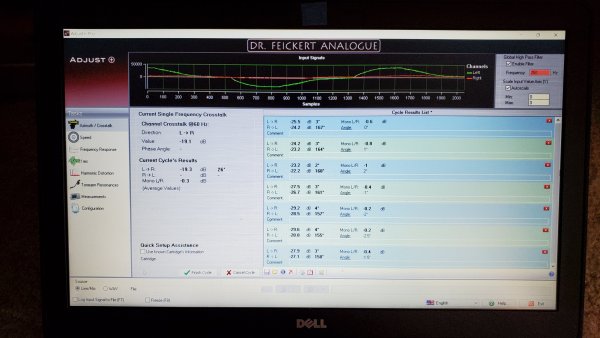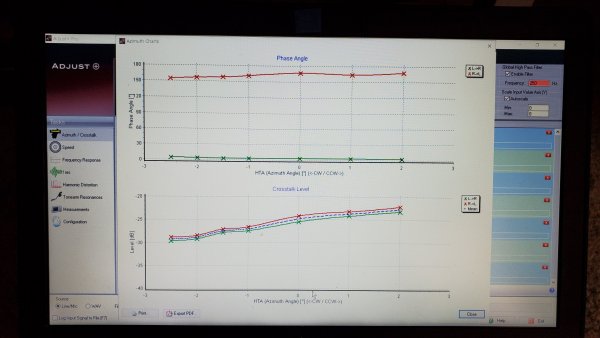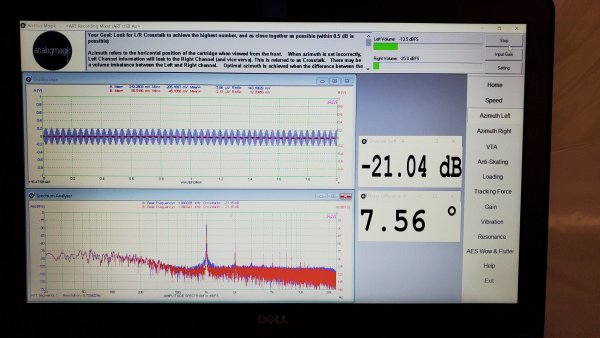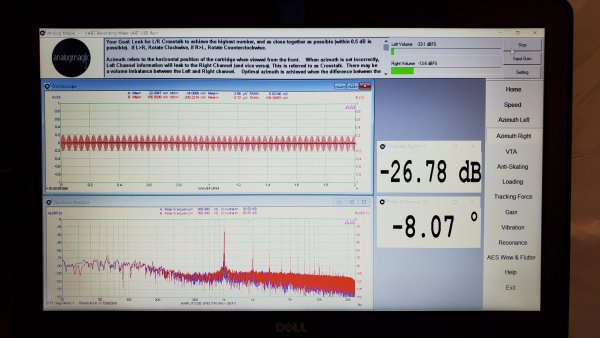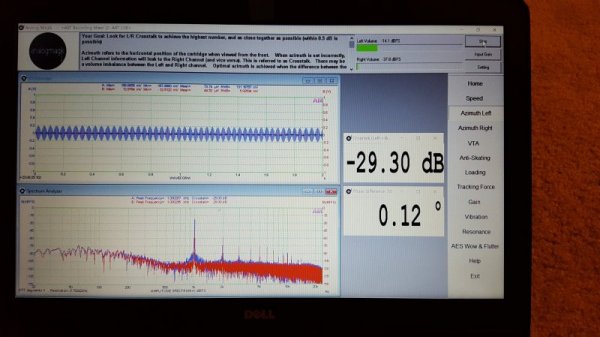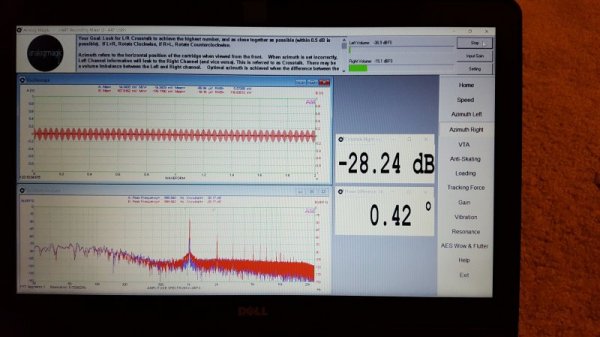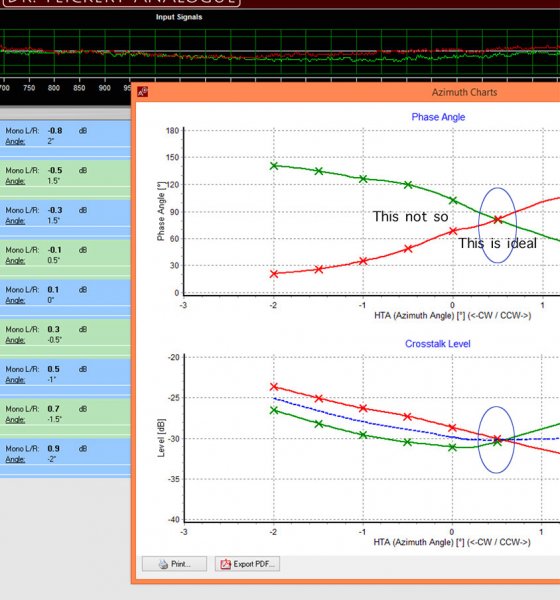Analog Magik
- Thread starter Tirebiter
- Start date
You are using an out of date browser. It may not display this or other websites correctly.
You should upgrade or use an alternative browser.
You should upgrade or use an alternative browser.
What was cartridge voltage output, the gain of the phono stage used, and the noise floor of the scope?
In this case the more likely answer is that Analog Magik is making assumptions in software that aren't correct, which are probably related to the sound card or the calibration of the sound card in use. I'd still like to know which sound card was used and if/how it was calibrated.
In this case the more likely answer is that Analog Magik is making assumptions in software that aren't correct, which are probably related to the sound card or the calibration of the sound card in use. I'd still like to know which sound card was used and if/how it was calibrated.
Don’t think this is relevant in the context of diametrically opposite results between two measuring methods but as I said, will try get more info and will come back if I get any relevant or at least interesting information. Was hoping someone else also did such comparisons...What was cartridge voltage output, the gain of the phono stage used, and the noise floor of the scope?
It may or may not be relevant, but it can be difficult to measure very small voltages accurately with old analog scopes. The induced crosstalk signal is at a low RMS voltage. In general, I'm simply interested in trying to root cause the problem here and understanding the variables in play only helps. There are two broad categories of possibility: user error and tool error. I'd like to get Analog Magik myself but don't really want to spend money on it while this issue is not understood.
Probably not but I wouldn’t feel comfortable knowing all others easily achieve 33dB.
i don't think a single cart has ever measured that high with AM. As mentioned earlier, it's rare to see a cart measure over 30 with AM, even though Vienna has seen an AM measurement of over 31 with some of his carts. I'm quite confident my Benz is fine, especially as it came back from Soundsmith fairly recently.
Sorry, didn’t see you measured with the AM. I absolutely believe results you got were as you say, but with the Adjust+ they are closer to some manufactures specifications. This is not important IMO. Different measurement methods, different results, nothing new. Obviously AM is different from Adjust+ also in this.
This is a photo of a tech spec you get with the LP-S. Have seen only one (among many) that has achieved 35dB...
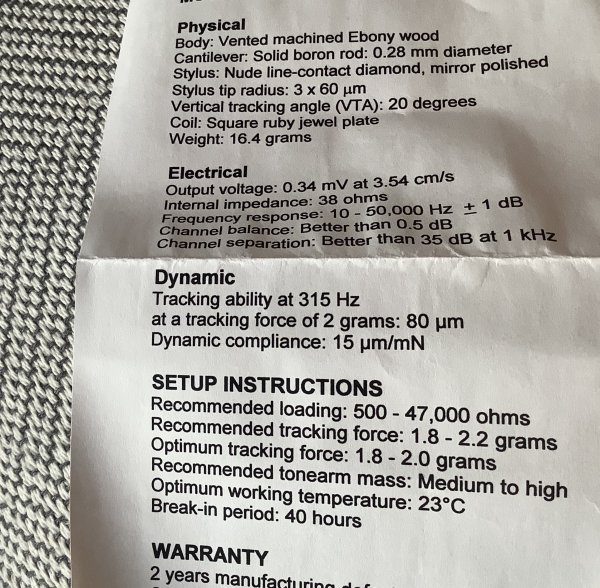
This is a photo of a tech spec you get with the LP-S. Have seen only one (among many) that has achieved 35dB...

Last edited:
If you adjust the azimuth to get a closer/better reading with AM does the sound improve?On AM, the channel difference seems greater than on A+, all the time. Perhaps due to differences in software algorithms. These get you close but still need to cinfirm by ear.
View attachment 61670View attachment 61671
If you adjust the azimuth to get a closer/better reading with AM does the sound improve?
In a prior setup (VPI Scout 2 with Dyna XX2.2) yes, AM was very helpful to adjust for improved sound. I am installing the Dyna on my VPI Prime and getting there.
I found the same. It's a journeyIn a prior setup (VPI Scout 2 with Dyna XX2.2) yes, AM was very helpful to adjust for improved sound. I am installing the Dyna on my VPI Prime and getting there.
running the same cartridge with the same settings,each of the 33.33 and 45 rpm test vinyls will give me different results as you will see in the attached photos
Hmmm ... interesting experiment. I wonder how many people with AM have done that comparison. It would make me want to try a third test record.
Did Richard Mak have any comment on those differences?
Hmmm ... interesting experiment. I wonder how many people with AM have done that comparison. It would make me want to try a third test record.
Did Richard Mak have any comment on those differences?
Dear Tim
Richard told me that its normal and expected that 45rpm will yield better results comparing to the 33rpm.
What he cannot explain is the reason of obtaining different results by two different 33rpm or 45rpm test vinyls of AM.
Dear Tim
Richard told me that its normal and expected that 45rpm will yield better results comparing to the 33rpm.
What he cannot explain is the reason of obtaining different results by two different 33rpm or 45rpm test vinyls of AM.
On AM, I get different readings on 33 versus 45 (better) as well. Probably due to the software algorithms. Perhaps it will be addressed in version 2 (when it cones out).
Similar threads
- Replies
- 11
- Views
- 403
| Steve Williams Site Founder | Site Owner | Administrator | Ron Resnick Site Owner | Administrator | Julian (The Fixer) Website Build | Marketing Managersing |







